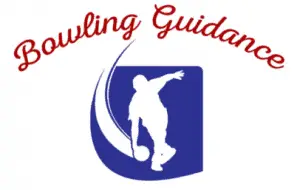 When the tournament and league seasons are right around the corner, many of you will prepare your bowling equipment, and that may include drilling your bowling ball. Before you do that, make sure you have studied your chosen layouts enough. The goal is to find the most consistent layout as it depends on the way you track your bowling ball. If you’re not entirely sure what “track” is, don’t forget to read the entire article. We would also explain everything you need to know about high track vs low track bowling.
When the tournament and league seasons are right around the corner, many of you will prepare your bowling equipment, and that may include drilling your bowling ball. Before you do that, make sure you have studied your chosen layouts enough. The goal is to find the most consistent layout as it depends on the way you track your bowling ball. If you’re not entirely sure what “track” is, don’t forget to read the entire article. We would also explain everything you need to know about high track vs low track bowling.
What is track in bowling?
We get a lot of questions on what is a high track / low track / medium track. Well, in bowling, the track of a ball is determined by the location of the first oil ring relative to the thumb and finger holes. If you look at a drilled bowling ball, you will see that the first ring is generally close to the thumb hole.
What is High Track Bowling?
Based on how close your track runs to your fingers and thumb holes, you can tell if the ball has a high or low track. A track is considered high when it is about 1-1.5 inches away from the thumb and finger hole. When you’re a high track bowler, you do have some limitations when it comes to layouts because some of the layouts can make your track shift more towards your finger and thumb which can cause it to roll over one or the other, and that isn’t a good thing. So there is a safe zone for that.
Do keep in mind that a high track in bowling is determined by the track diameter instead of the track position. One simple way to remember that is:- High track means low tilt, and Low track means high tilt. If your track is more on the higher side, your PAP is going to be farther away and that’s gonna move the pin farther away from the axis changing the layout. If you’re a high track bowler, you’re more likely to see stronger snap on the backend.
What is Low Track Bowling?
The low track is pretty far away from the thumb and finger holes. Generally, a bowling ball with a low tilt (high track) burns its energy quicker when it hits the dry lane. Therefore, when a ball with a high tilt (low track) rolls down the lane, it burns its energy slower. It reacts less violently and so, a low track ball doesn’t really run out of steam fast. A low track high rotation player is capable of hooking his/her ball more than any other track bowler. Usually, those who prefer low track create more pin action on the lane. Moreover, the lower track makes the ball deliver a less violent reaction off the breakpoint.
As mentioned, track in bowling is determined by the track diameter instead of the track position, so, in low track bowling, the diameter is smaller. This is one way to measure and tell whether a ball is a high track or low track supportive.
Difference between high track and low track bowling?
A bowling ball can have a high track or a low track layout. Bowlers who have high track layouts are high track bowlers and vice versa. High track bowlers have a more violent snap at the breakpoint compared to the low track bowlers. The benefit high track bowlers get is that they have the ability to change their bowling style to adjust to varying conditions on the lane.
If you picture a battle between high track vs low track, it is a low track bowling ball that will rev over a certain area a lot more times than a high track bowling ball. This is because with a high track, the bowling ball has to roll more aggressively and that makes the ball pick up less oil as it goes down the lane compared to a low track.
What causes high track bowling?
To understand what causes high track bowling, let us give you an example. Suppose, a bowler used to track very close to the thumb hole, often clipping the bevel. Now, every time he throws the ball, he just doesn’t get his desired ball motion and reaction. He even tried various pitch changes, but that still didn’t help. Although, this can indicate that his track is off by 1/4″ or so. If he then gets some professional lessons and gets his bowling style checked by a coach. Later, he realized that his hand was outside the ball throughout his entire ball-swing.
So, what can be done now? Well, if the bowler learns a stronger release while keeping his hand behind and under the ball longer, he may observe high track. If he does that, his track is most likely to move almost an inch away from his drilled holes. His axis rotation will decrease and his thumb get out of the hole clear earlier during ball releases which will change ball reaction big time.
Conclusion
The term ‘track’ in bowling can get a tad bit confusing. If your ball reaction doesn’t seem right, make sure you don’t overlook the track of your ball. One of the best ways to solve this matter is when you get in touch with a bowling expert or coach. He/She will guide you to what you have to do and point out the issue. Until then, keep on bowling our fellow bowlers!

